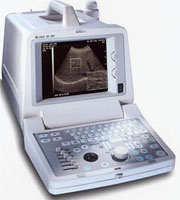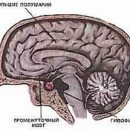The basis of the development of amyloidosis is a violation of a protein exchange, which leads to deposits in the tissues of a certain substance. The main symptoms of amyloidosis depends on the localization of amyloid sediments and the degree of violation of the function of the affected organ.
Content
The concept of amyloidosis
Amyloidosis is a disease, which is based on the heterogeneous violation of the protein metabolism, under which the protein nature substance is deposited in the tissues of different organs - amyloid. Distinguish system and local amyloidosis. With the latter, the sediments of the amyloid are localized only in a certain organ.
Causes and mechanism for the development of amyloidosis
 Nature and mechanisms for the development of amyloidosis are not clear. It is believed that the development of the disease is protein products - the predecessor of amyloid. This occurs under the influence of a specific amyloid - release factor, the production of which is carried out by blood cells due to a genetic defect or under the influence of provoking agents. The accumulation of the predecessor protein in conjunction with violations of his catabolism and (or) resorption leads to the production of amyloid protein, from which amyloid consists of 96-98%.
Nature and mechanisms for the development of amyloidosis are not clear. It is believed that the development of the disease is protein products - the predecessor of amyloid. This occurs under the influence of a specific amyloid - release factor, the production of which is carried out by blood cells due to a genetic defect or under the influence of provoking agents. The accumulation of the predecessor protein in conjunction with violations of his catabolism and (or) resorption leads to the production of amyloid protein, from which amyloid consists of 96-98%.
Due to lack of knowledge about the factors affecting the development of systemic amyloidosis, and the mechanism of its development, the disease is made to divide on genetic (hereditary), primary, secondary and senile. Genetic amyloidosis develops as a result of hereditary defects of enzyme systems involved in protein synthesis. It is found in several forms (family, neuropathic, etc.), among which amyloidosis during periodic diseases is most important in the CIS countries.
Primary amyloidosis occurs isolated, the reason for it is not installed. The precursor of amyloid and amyloid fibrils are the derivatives of the light chains of immunoglobulins.
Secondary amyloidosis arises against the background of pronounced disorders of protein metabolism, more often - as a result of chronic infections, tuberculosis, syphilis, malaria, long-term pumping processes in the lungs, osteomyelitis. It is less likely to develop amyloidosis with rheumatoid polyarthritis, lymphogranulomatosis, actinomycosis, myeloma disease. With secondary amyloidosis, the amyloid protein is represented by an abnormal protein, amyloidvyvobodynaya factor - interleukin-1.
Special place occupies the so-called senile amyloidosis, which is characterized by the defeat of the heart, brain and the pancreas. Most of the local forms of amyloidosis do not have an established causal factor and are designated as idiopathic amyloidosis.
Primary amyloidosis is characterized by the deposition of amyloid around collagen fibers, secondary - by the near-shudding localization. As a result, primary amyloidosis is more often affecting the digestive tract, almonds, skin, heart, nerves and large vessels, and secondary - internal organs, and in them, first of all, small vessels. In this case, the amyloid substance is first postponed in the wall, and then spreads to the periphery of the vessel, moving further on the adjacent connective tissue.
By frequency of sediment of amyloid, organs and systems can be positioned in the following order:
- spleen
- kidney
- adrenal glands
- liver
- gastrointestinal
- The lymph nodes
- pancreas
- prostate
- a heart
- brain
- leather
Basic symptoms of the disease
The symptoms of amyloidosis depend on the preemptive localization of amyloid sediments and the degree of violation of the function of the affected organ.
Heart amyloidosis is more often primary. It is characterized by symptoms of progressive heart failure, in parallel with which (or a little earlier) there are various conductivity disorders and heart rhythms.
The amyloidosis of the gastrointestinal tract is usually manifested by diarine syndrome, less often develops Mal Absorption syndrome. With the defeat of the esophagus, the dysfagia. In general, absorption disorders lead to the development of polyhypovitaminosis and weight loss up to Cachexia. Often the increase in the size of the language is detected, which leads to the thought of primary amyloidosis. Typically, an increase in the size of the liver and spleen, not accompanied by a third of patients with impaired of their functions.
Isolated liver amyloidosis is extremely rare, combined lesions are usually found, especially with secondary amyloidosis. Among the main symptoms, an increase in the liver prevails, which, however, may develop in later stages of the disease. Liver with dough tight, low-escaped. Jaundice is rarely observed and is unanswed. Jaundice is possible against the background of the primary amyloidosis of the liver. In some cases, hemorrhagic syndrome can develop.








